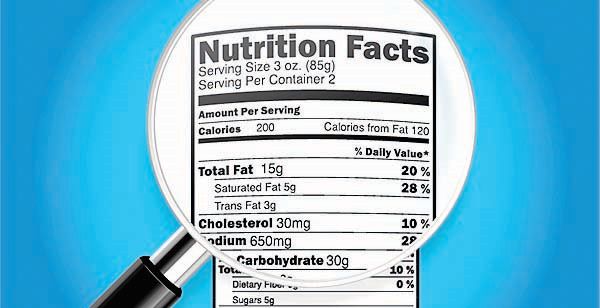Understanding nutrition labels key to informed food choices

It is important to learn how to read nutrition labels, especially in this fast-paced world full of numerous food choices.
These labels provide insight into the food’s nutritional makeup, empowering us to make informed and healthful purchasing decisions. In this article, we’ll look at the nutrition label and how it might help you make healthier food choices.
Nutrition labels are informative panels that are typically present on the packaging of the majority of processed food products.
Nutrition labels serve as comprehensive sources of important information on the nutritional profile of a product, encompassing crucial details such as caloric content, macronutrient distribution, vitamin and mineral composition, and additional relevant information.
By understanding these labels, individuals can navigate the complexity of food products and make decisions that align with their nutritional requirements and objectives.
What to look out for
Serving Size: Serving size refers to the recommended quantity for which nutritional information is given.
It’s critical to compare the provided serving size with the actual amount you consume to fully comprehend the nutrients you’re consuming.
Calories: Almost all packaged food products contain visible calorie information per serving which enables people to keep an eye on their energy consumption and maintain a healthy diet.
Macronutrients: Packaged food products contain crucial information on carbs, proteins, and lipids which helps people keep a balanced diet. These macronutrients each have a unique function in how the body works.
Percent Daily Value:
The amount of a nutrient in a serving that contributes to a person’s daily nutritional requirements is shown as %DV (Percent Daily Value). It directs people toward controlling nutrients, such as sodium, added sugars, and saturated fats while ensuring adequate vitamin and mineral intake.
Nutrients to limit
Nutrition labels indicate nutrients that should be consumed in moderation, such as sodium, added sugars, Trans fats, and saturated fats. You should look out for this section since it is very important in preventing chronic diseases.
Footnote: Often ignored, the footnote offers a context for understanding percent daily values (%DV) based on a typical 2,000-calorie diet.
Nutrition labels are important because when you know how to read nutrition labels, you can make smart choices that are in line with your health goals. When choosing between similar products, comparing labels is a good habit because it makes it easier to make choices with less of what you don’t want.
Also, knowing that some packages have more than one dose makes it easier to figure out how many nutrients you’re getting.












